Pronghorn numbers stable
 By David Schlake ewS
By David Schlake ewS
Following the Texas Parks and Wildlife Department’s summer pronghorn surveys, the word “stability” rings optimism in the ears of wildlife
A species that calls both the

 By David Schlake ewS
By David Schlake ewS
Following the Texas Parks and Wildlife Department’s summer pronghorn surveys, the word “stability” rings optimism in the ears of wildlife
A species that calls both the
Lone Star outdoor newS
Although opening weekend dove hunts weren’t great for everyone, many hunters agreed with the predictions of more birds being around this year.

Jeff Hart and Charles von Althann made the trip from Washington, D.C., to Texas to dove hunt with a friend on the first Saturday of the season.
“There were lots of opportunities and lots of shots,” Hart said. “It was a great morning to be hunting in Texas”
Hunters report a big flurry
of activity about 9:15 a.m.
Hart shot his limit, near Old Glory in Stonewall County, using his 20-gauge Beretta. He plans to hunt in the D.C. and Chesapeake Bay areas over the next few weeks.
“The fields are small there, but sometimes there are lots of birds,” he said. “It was fun to hunt over a giant field here.”
Although von Althann didn’t limit, he was happy to take nine birds.
“I hadn’t hunted in a long time,” he said. “I was having fun and it didn’t matter how many I got.”
The group said the high weeds made finding downed birds more difficult.
Like in many groups, one member, Rob Grasso,
Panhandle and Trans-Pecos regions home, pronghorn live in a constant battle with drought — the primary factor determining their numbers year over year.
Despite record-high temperatures this summer, a mild spring lent a helping hand to herds in both regions, as the
state issued only eight fewer total permits than they did last year. In 2020, TPWD issued 675 buck-only permits in the Panhandle region and 165 in the Trans-Pecos, whereas this year, it issued 670 and 162, respectively.
The survey process starts
Most people in the San Antonio area were elated to feel the mild, scattered showers that hit the area in recent weeks. However, while the short-lived precipitation seemed minor in regard to changing weather here in Texas, they dropped the surface water temperature on Braunig and Calaveras Lakes enough to make them mix or turn over.
Although no major fish kills occurred, anglers had to adjust to
continue hooking up with the redfish these lakes are stocked with.
According to Mitchell Nisbet, the Inland Fisheries San Antonio district manager and biologist, the warmest water in these lakes floats on the surface, while the coldest water is situated deep in the water column.
“The warmer water is fully oxygenated, and oxygen levels tend to get lower down in the depths below the thermocline, where the coldest layer of water is located,” Nisbet said. “The cooler water below the thermocline does not mix
Lone Star outdoor newS

At the Texas Parks and Wildlife Commission Annual Public Meeting, held Aug. 23, a number of coastal anglers spoke out about speckled trout limits.
Following the 2021 freeze that impacted trout populations, the state issued an emergency order. It reduced the speckled trout limit to three fish with a 17- to 23-inch slot from the Matagorda to the southern border. On Sept. 1, the order expired and the limit returned to five fish with a 15- to 25-inch slot.
The anglers and guides spoke in favor of returning to the three-fish limit, and most advocated for a narrower slot, from 15 to 20 inches.

Capt. David Rowsey, who fishes in the Corpus Christi area, said he felt the five-fish limit was no longer sustainable with the number of saltwater fishermen at 1.7 million and growing.
“Speckled trout is the money fish on the Texas coast,” he said. “We should lower the limit and tighten the slot.”
Parker Holt, of Austin, wadefishes for trout in the Laguna Madre about 45 days each year.

“I’ve kept records of trout over 25 inches for the last 15 years,” he said. “I have seen a steady decline as my days on the water have increased.”
Taylor Garcia asked the commission to consider what has happened to the trout fishery in Florida, where numbers declined dramatically.
Flaring waterfowl over decoys don’t stand a chance with Fiocchi Flyway shotshells in your boomstick. Flyway Series shotshells combine treated steel shot, protective wads, and matched powders to deliver reliably dense patterns and confident terminal performance from a load that is easy on your gun barrel but hard on your target. When you must use steel shot, there is a Fiocchi Flyway shotshell you can depend on.


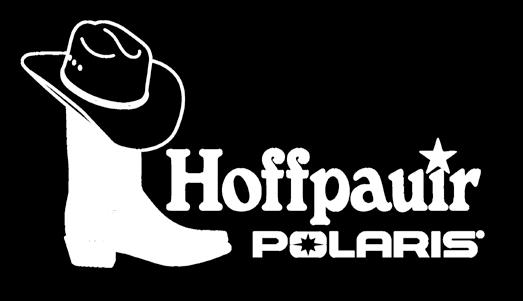

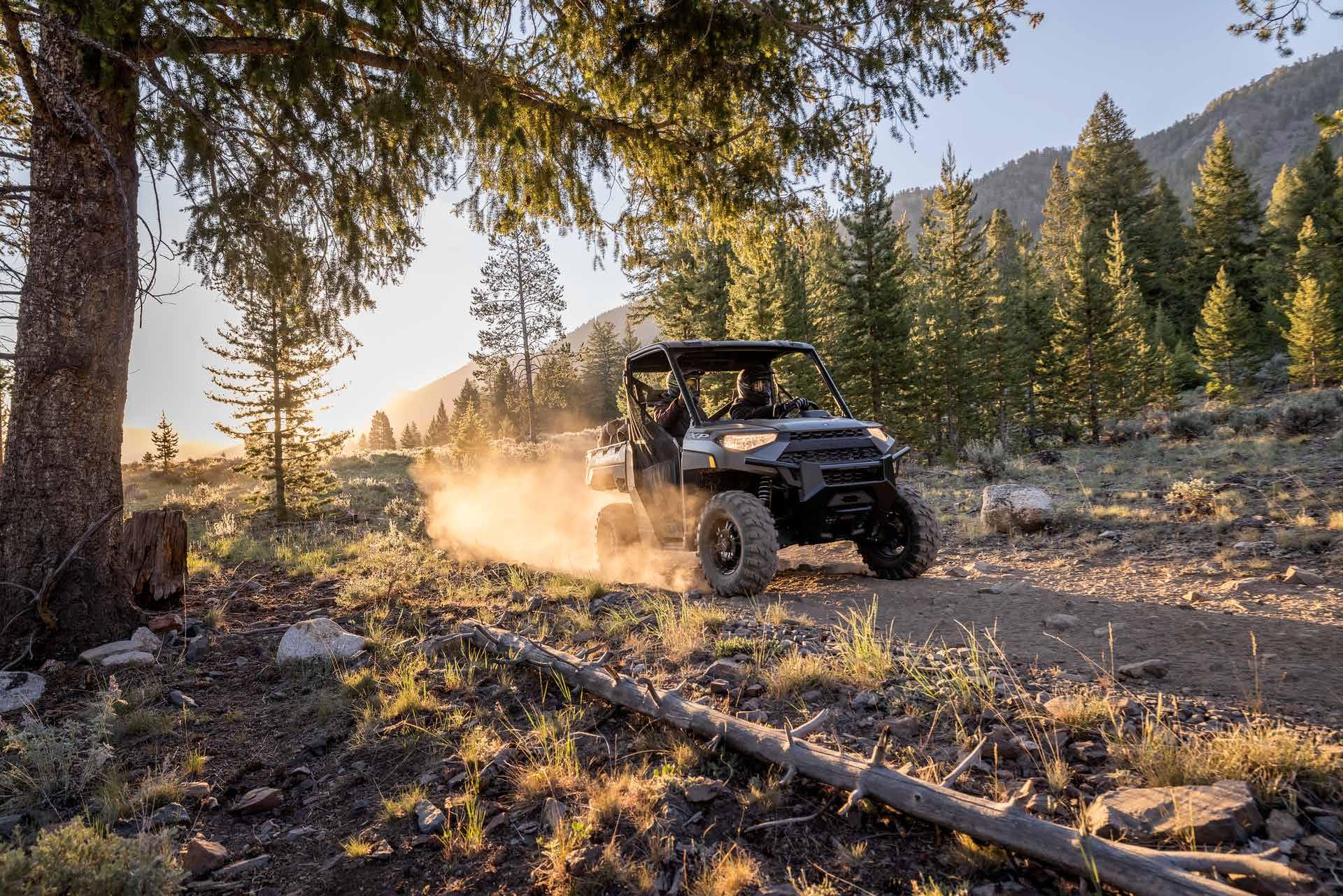
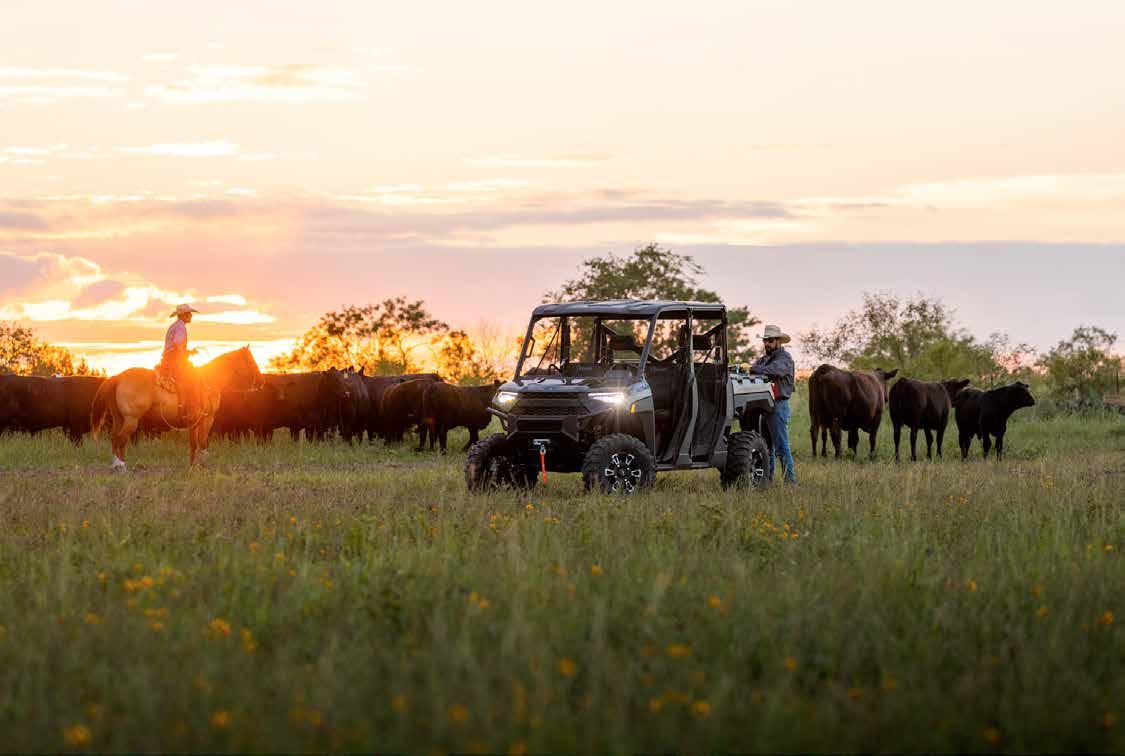
The approval of a series of new rules and surveillance zones wasn’t a surprise at the Texas Parks and Wildlife Commission meetings on Aug. 22-23. Nor was the recent Emergency Order increasing movement restriction on breeder deer and requiring visible ID tags on each released deer.
The reaction at the public hearing, though, may have been stronger than anticipated, especially on the topic of billboards dotting the state.
After positive tests for chronic wasting disease at several breeding facilities, new zones, extending two miles around each facility, were set in Hunt, Kaufman, Bexar, Frio, Sutton, Duval and Brooks counties.
Of 97 comments received, 75 percent were in favor of the zones, although several people said they wanted a two-year time limit on the zones.
What spurred the ire of several breeders and others, was a campaign by Texas Parks and Wildlife Department to educate the public and raise awareness about CWD, especially the placement of billboards across the state saying in capital letters, “Chronic Wasting Disease Is A Real Threat To Texas Deer,” which several people said aren’t educating hunters, but rather are an attempt to scare them.

Marty Berry, a rancher and deer breeder, said the billboards are “chasing off hunters,” even though there is no indication the disease could cause any issues with humans.
“There is no end game in sight,” he told the commission. “Almost all of our hunters now want to donate their meat.”
Tim Glass contended TPWD’s data painted a bleak portrait of deer breeders.
“There have been 540 positive animal detections,” he said. “Free range have been 20 percent (101) and 298 from breeder pens, but two facilities (Hunt and Uvalde counties) account for 302 of those. The agency presents the problem as statewide, and neither of these counties has had a positive free-ranging animal.”
John True, Texas Deer Association’s president, said the findings show the antemortem (live)
Please turn to page 15
By Nate Skinner For Lone Star outdoor newSStaci Glassco grew up shooting handguns and regularly shoots sporting clays, but had never participated in a hunt. That changed recently when she had the opportunity to go hunting at El Tesoro Ranch, which is a private ranch near Charlotte that is owned by her employer, Cajun Industries.
When presented with the chance to pursue a wild game animal for the first time, she was excited to give it a try. After making a few sits in a blind over a couple of days, she was able to harvest a Corsican ram from the high rack of a ranch vehicle.

Glassco said her adventure at the ranch began by spending some time at the range to get comfortable with the .308-caliber rifle she would be shooting. She already had some experience shoot-
ing rifles, so it didn’t take long before she was dialed in.
“On my first day of the hunt, I spent both the early morning and late evening hours in a blind, accompanied by hunting guide, Jim Bray,” Glassco said. “We saw quite a few animals, but I didn’t have any shot opportunities.”
The next morning, they were able to come across a group of Corsican sheep while cruising in a ranch vehicle.
“We were riding around in a high rack truck when we spotted the sheep,” Glassco said. “The ranch manager, James Saunders, put the truck in a position that gave us a great vantage point to get a better look at the rams that were off in the distance. After observing the sheep for several minutes, Jim and James helped me get my sights on the ram they decided would give me the best shot opportunity.”
Glassco said she took her time to
A study on the impact of habitat fragmentation could help quail researchers and landowners prioritize areas for habitat restoration, with the goal of helping bobwhite quail.

Quail, like other wildlife species, are impacted by habitat loss and fragmentation. How much, though, had not been studied extensively.
Kristyn Murphy, a third-year graduate student at Texas A&M University-
Kingsville, presented the findings from her study through the Caesar Kleberg Wildlife Research Institute, “Habitat Loss and Fragmentation: How Much Do They Really Influence Bobwhite Populations in Texas,” at the Statewide Quail Symposium in Abilene.
Murphy said habitat fragmentation can be as simple as a road running through a pasture, and also includes development, agricultural fields, clearcutting, or even mowing a pasture.
“Species adapt in different ways,” she said. “Coyotes, possums and raccoons adapt quickly. Deer adapt. Grassland birds and mountain lions are impacted more.”
The impact on bobwhite quail had not been quantified before Murphy’s study in the Rolling Plains and Cross Timbers in North Texas and in South Texas and the Gulf prairies and marshes.
“There is more agricultural fragmentation in North Texas,” she said.
Habitat connectivity is a key in factors that influence bobwhite populations, Murphy said.
In her research, the bobwhite habitat of each 30x30-meter area was classified in one of 15 possible classes, often using satellite imaging, excluding areas in city limits. The connectivity also was analyzed.
steady her aim as she looked through the scope of the rifle. Both Bray and Saunders coached her on where to place her shot and encouraged her to only shoot when she was ready.
When she finally pulled the trigger, she was rewarded with the sight of her quarry dropping on the spot.
“I know I was pretty methodical with my approach when it came time to shoot, but looking back, it all seemed to happen so fast,” Glassco said. “My adrenaline made the shot process seem like a blur, and when I saw the animal fall, I was elated.
“I immediately understood why folks enjoy the sport of big game hunting, and at that moment, I knew it was something I definitely wanted to experience again. This was an experience of a lifetime for me. Anyone who has never hunted before needs to try it.”

Lone Star outdoor newS







Jeff Hildebrand was named the Chair of the Texas Parks and Wildlife Commission by Gov. Greg Abbott, who also appointed William “Leslie” Doggett as a commission member. Both appointments were effective Aug. 31, with Doggett’s term set to expire Feb. 1, 2029.

Arch “Beaver” Aplin’s term expired Aug. 31. Aplin served as chair of the commission for the past two years.

Doggett, of Houston, is executive chairman and founder of the Doggett Equipment Services Group and the Doggett Auto Group. He is a member of the World Presidents Organization, former president of the Houston Equipment Distributors



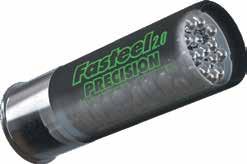
Association, and a former director for the John Deere North American Dealer Board and the Toyota Material Handling Dealer Board. Additionally, he is a trustee of the Houston Methodist Research & Academic Institute, The Kinkaid School, San Jacinto Monument and Texas History Museum, and the Museum of Fine Arts Houston –Rienzi.
Hildebrand, also of Houston, is the executive chairman and founder of Hilcorp Energy Company. He is a director of the Houston Livestock Show & Rodeo, Central Houston Civil Improvement and Central Houston, Inc. Additionally, he is a member of the Houston Police Foundation Board of Directors and a trustee of the Texas Foundation for Conservation.
Three Texas game wardens were recognized for their service at the Texas Parks and Wildlife Commission meeting Aug. 24.
Robert “Bobby” Kana was named the 2022 Texas Association of Midwest Fish and Game Law Enforcement Officer of the Year, Kana has served as a Galveston County game warden for 29 years and made hundreds of arrests while confiscating thousands of pounds of illegal fish and game. He has spent thousands of hours patrolling the public waters of the Upper Texas Coast, including the Gulf of Mexico. Kana also was an integral part of search and rescue operations during hurricanes Ike, Rita and Harvey. He was recognized as the Officer of the Year in 2010 by the Coastal Conservation Association.
Cynthis Guajardo-Echols received the Director’s Meritorious Citation. She has been a Game Warden for 27 years and was recognized for her meritorious services while supporting, coordinating and personally responding to multiple critical incidents over the course of her career. Guajardo-Echols began her career in Cherokee County before being promoted to the Law Enforcement Division Special Investigations Unit, where she continues to serve with a focus on environmental crimes.
Guajardo-Echols is a certified master peace officer, certified fraud examiner and a member of the department’s Critical Incident Peer Support Team.
Chaplain Scott McIntosh received the Law Enforcement Director’s Life Saving Award. McIntosh joined the Law Enforcement Division in 2016 to serve as Chaplain for Texas game wardens. Assisted by 12 volunteer chaplains that he oversees, Mcintosh expanded the chaplain program to include services to all TPWD employees and their family members.
McIntosh graduated from Howard Payne University with a Bachelor of Arts in Biblical Languages and from Midwestern Baptist Theological Seminary with a Master of Divinity.
—TPWD




Continued
headed to the middle of the field, was the first to shoot his limit quickly, and then complained people around the edges were peppering him with shot.
Nic Drayovitch hunted with his wife, Kellie, near Wichita Falls.
“The birds were flying surprisingly well,” he said. “Kellie and I knocked out our limits around 9 a.m.”
Lone Star Outdoor News’ David J. Sams went alone to a few small water holes.


“There weren’t that many birds, but enough where I could scratch out 10 in the morning,” he said. “Sometimes the birds would land on the edge of the pond and walk down to the water, and I sneaked over the dam to flush them. It kind of reminded me of jumpshooting ducks.”
The next morning, he chose a different water source and used a spinning-wing decoy.
“That got them in a little closer,” Sams said. “There weren’t that many birds but enough for me to get my shots.”
Steve Broadhurst said the hunts in Comanche County were the first good opening weekend hunts in five or six years.
“The drought is so bad, the water tanks are dry,” he said. “But the spring rains helped, and there were plenty of sunflowers and goat weed. We were in a good spot.”
Unusual for the area, Broadhurst said about a third of the birds were whitewings.
“Some guys ran out of shells shooting at the high ones,” he said.
Hunters on public land near San Angelo reported great hunts, with groups of 15-20 hunters bagging limits over the weekend.
In typical South Texas fashion, special white-winged season hunters near Frio, Hondo and the Rio Grande Valley reported good evening hunts.
Continued
“We looked at whether the quail could get from one habitat patch to the next, and the cost of that movement,” Murphy said.
Each area was given a cost value, in grades from 1 to 10.
“We put the habitat map and cost values together,” Murphy said, describing the complex software tools used. “And we calculated the distance between habitat patches.”
There was a difference in habitat and connectivity between North and South Texas, but less than what Murphy expected.
“In the North, there was 72-percent habitat and 80 percent in the South,” she said. “The connectivity was also better to the south, but not by a large amount.”
Murphy concluded that South Texas had 360,000 connected acres, while North Texas areas had 333,000, and there was a positive relationship between habitat connectivity and bobwhite abundance.
“When this number goes up, quail do better,” she said.
What may be the most useful tool coming out of the extensive analysis is identifying areas in need of conservation efforts and habitat restoration.
“We can pinpoint areas that are more fragmented,” Murphy said. “From there, we can prioritize areas for conservation.”
The SL3 is a distinctive shotgun within Beretta’s premium portfolio, in which design elegance meets superior Beretta technology. Beautifully crafted in Gardone Val Trompia by master gunsmiths, the SL3 features a superior locking system, an exceptional firing mechanism, and a beautiful design. Discover how craftsmanship, passion, and the pursuit of perfection lead to outstanding performance in the field.
For more information contact one of our Premium Dealers or the Beretta Galleries

 By Nate Skinner Star outdoor newS
By Nate Skinner Star outdoor newS
Nick Haxhijaj recently set out early in the morning to fish out of his kayak off the Three Mile Cut along Matagorda Beach. When he arrived at a stretch of marsh known as Spring Bayou, located in the southwest corner of East Matagorda Bay, he noticed something strange.
As he got into the water, he realized the tide was low and there were swarms of mul
Capt. Fern Gonzales was wadefishing in shin-deep water in East Matagorda Bay with the intention of targeting redfish when he hooked up with a hefty speckled trout. The speck ended up having a tag in it from the Trout Tagging Texas program, which revealed that it had traveled more than 25 miles from where it was originally caught and tagged in the surf.
Gonzales had already caught a couple of reds while using the same croaker as bait when he felt the speck thump.
“As the fish got closer, I noticed that it had something hanging off of its body,” Gonzales said. “I thought it was a twig or a piece of grass at first, but then I realized it was a red tag that was covered in some moss. After I landed her, I put her in the water in my fish bag and walked back to the boat, which was only about 40 yards away.”
Gonzales measured and weighed the trout, which ended up being 25 inches in length and about 5.5 pounds. He took note of the number on the tag before posing for a photo with the fish, and then released it safely back into the water.
“My buddy got a video of me releasing the trout, and she swam away strong,” Gonzales said. “I had been hearing about a group that
was tagging and releasing speckled trout along the Texas coast, but I wasn’t familiar with the program. The founder of Trout Tagging Texas, Chris McKinley, ended up reaching out to me shortly after a photo of the tagged trout began circulating on social media, and he explained to me that the fish was originally tagged in the surf.”
According to McKinley, the same trout had been tagged and released along the beach front, about 5 miles east of the Colorado River by Riley Freese about a month prior. Freese was fishing the surf with McKinley, helping him tag fish, and originally caught the trout on a soft plastic jig.
“From where the fish was caught and tagged in the surf to where it was recaptured and released once again in East Matagorda Bay, the speck had to have traveled between 25 and 26 miles,” McKinley said. “It either swam east down the beachfront from where it was caught and then came up Mitchell’s Cut and into East Matagorda Bay, or it swam west and then up the Colorado River before entering the bay. Regardless of which path the fish took, it covered over 25 miles of water from where it was initially tagged.”
McKinley said the Trout Tagging Texas program has had 13 recaptures of tagged trout this summer. Of those fish, Gonzales’ was the first trout to be tagged in the surf and then recaptured in the bay.
let along the surface. As he pushed farther into the back lake, he started seeing dead redfish floating around. Soon he noticed other species of fish floating dead — speckled trout, flounder, shad and croaker, among others.
“It was absolutely wild,” Haxhijaj said. “I had no idea what was going on and had never seen anything like that before in my life.”
media platforms, and it wasn’t long before other anglers started reaching out. This led to officials at TPWD being notified about the incident.
Matagorda-area angler Sam Sliva walked into the Spring Bayou marsh several hours after Haxhijaj came and went. Sliva had intentions of wade-fishing protected flats there after a friend reported catching some nice trout and flounder in that

he could see fish floating everywhere he looked. While walking a stretch of the marsh, he counted 112 dead flounder, 42 dead trout and six dead redfish, all of which he estimated to be of legal size.
“There were a lot of dead undersized fish, too, that I didn’t count,” Sliva said.
Claire Iseton, team lead for the Texas Parks and Wildlife Ecoystem Resources Assessment team, confirmed there was an isolated fish kill that
For Lone Star outdoor newS
No different than the Cowboys, barbecue or suit-wearing businessmen, bass fishing is simply a staple of the DallasFort Worth metroplex. With a myriad of trophy-producing lakes within a cast of one another, there’s a strong market for full-time guides, so long as they have the skills to hack it. Enter Brandon Dillard, one of DFW’s mainstays. As a metroplex local who grew up fishing both Lake Grapevine and Lake Lewisville, Dillard’s 30 years of experience
fishing his original haunts has turned him into one of the area’s premier largemouth bass fishing guides.

In fact, he competed in local tournaments from 2008 until 2020 before ever contemplating making the transition into guiding. However, after being laid off during the pandemic, he decided to take a leap into the world of professional guiding.
“It just kind of took off,” he said. “It worked out, and two and a half years later, here we are.”
Ironically, not only did the shutdown not stand in his way,
but it actually helped him hit the ground running, as it exposed his new business to an audience of people stuck at home and looking for things to do. People who may have otherwise been at the movies or at the bar flocked to lakes and other natural areas to get out of the house.
When he takes a customer or group of customers fishing, his goal is for them to catch their best-ever bass. In addition to catching fish, many of his trips are geared toward educating on things like onboard electronics.
“A lot of guys want to know how to find structure, what the
bass look like, finding brush piles, house foundations, and things like that,” Dillard said. “I really try to gear the trips to teaching as much as possible.”
A true student of the craft, Dillard is just as passionate about the strategy tied to bass fishing as he is about bringing the fish onto the boat.
“I always ask customers about the biggest bass they’ve ever caught, because that’s always the goal I set for myself as their guide,” he said. “Having a customer catch the biggest fish they’ve ever caught in my boat makes for an awesome day of guiding.”


You don’t always have to head way offshore to catch big fish along the Texas coast. At the Port O’Connor jetties, anglers are finding tarpon, kingfish, bull reds and jack crevalle on a variety of lures, as well as live and dead baits.
Guide Curtis Cash has been spending a lot of time fishing the jetties over the past couple of decades and was recently on the water and fishing live croaker.
“These jetties have a lot of deep water and strong tidal movement,” Cash said. “That combination attracts a lot of baitfish and right now the tarpon are here in numbers.
During September and into October a lot of the tarpon will be rolling. That’s when we’ll be using top-water lures to catch them. A good number of tarpon here will be in the 10- to 15-pound class, but there are some that will be in the 130- to 140-pound range.”
With the water usually being clear along the rocks, lures are a good option for tarpon. Live croaker works well for reds, tarpon and jacks. And, when the kings are in with a dark, blue-green tide, they can be caught with ribbonfish bump-trolled behind the boat.
“Some of my go-to lures are 3/4-ounce Rat-L-Traps,” Cash said. “They can be fished on top or allowed to sink several feet. Some of the better bites will be along the rocks for rolling tarpon. My top colors are silver/ gold, chrome/blue back and gold/black back. I like to fish them on a 3-foot, fluorocarbon, 40-pound-test leader.”
Another productive lure is a popper that’s
about 6 inches long, a custom-made chugger called a MAS (Multi-Action Swimbait) Lure. Some of his best colors are silver with a blue back or chartreuse.
One of the best areas to find rolling tarpon is along the end of the south jetty, and on down the rocks about 150 yards.
Guide Tom Horbey has been fly-fishing along the Texas coast for more than 44 years, and most of that time he’s been fishing out of Port O’Connor. This time of year, you can often find him at the end of the south jetty. And his target fish will be rolling tarpon.
“There are days when we will see lots of tarpon,” he said. “Tarpon will hit a fly all day long, and once you set the hook, they come out of the water a lot.”
Another option along these jetties will be at the mouth of the rocks that lead into Matagorda Bay. Cash said the area is a good option for catching bull reds and jacks, especially on a hard incoming tide that’s moving a lot of baitfish and small crabs.
“You can catch both jacks and bull reds on chuggers or jigs and dead baits like a sardine,” he said. “But if you just want to have some fun, tie on a chugger. A lot of the time the jacks and reds will be feeding on live baitfish. That sets up some excellent sightcasting. The chuggers make a lot of noise and are easy targets for these big fish.”
For the best king mackerel action, two good areas are just off the mouth of the jetties and anywhere from 1 to 10 miles out in the Gulf of Mexico. One of his best tactics is to bump-troll ribbonfish. Cash also said a crankbait like the Russelure is a good option, trolled from 4 to 6 miles per hour.
 By Tony Vindell For Lone Star outdoor newS
By Tony Vindell For Lone Star outdoor newS
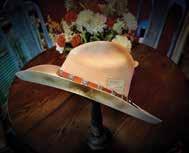


In an effort to beat the deadline of the 2023 red snapper season in federal waters, a group of anglers headed offshore before its expiration and came back happier than clams.

The season in waters more than 9 nautical miles off the Texas coast was to end Friday, Aug. 25 at 12:01 a.m.
Stephen Murphy, an owner of the Miss Mona private charter vessel, decided to give it a try just as the season was coming to a close.
“Do you guys want to go out?” was the phone message he left a day earlier. “Get here at 6:30 a.m. tomorrow.”
The boat left from the South Padre Island Marina right on time. It made its first stop a little more than 90 minutes later, where fishing began in about 130 feet of water.
To the surprise of the anglers, only a couple of keepers over the 16-inch legal size were put on board. Murphy said the current was acting strangely, even though the day’s swells were forecasted at 2-3 feet.
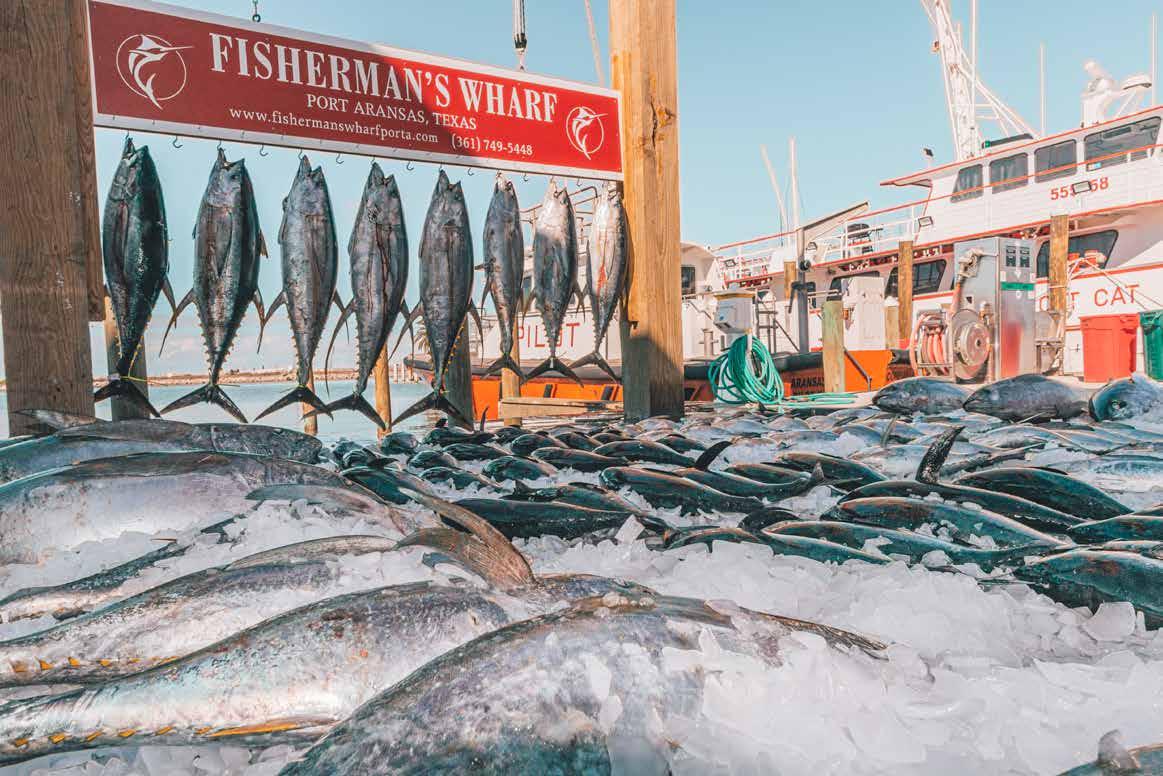
A day earlier, the swells reached 7 feet. A headboat went out that day with about 20 anglers on board and it returned with half of the limits per angler.
Although fishing on the season’s last day wasn’t what Murphy had expected at first, he told the anglers to bring the lines up as he was going to try a different place. That spot was about 5 miles farther out.
Minutes later, one red snapper after another, each measuring 20 inches or more in length, started biting.
“This is awesome,” Marty Mire, an angler from South Padre Island, said. “Just when the season is getting better, it’s now coming to its end.”
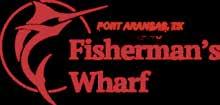
Weslaco resident Frank Shisler agreed.
“This is great,” he said. “This is my first red snapper trip in several years.”
The anglers said Aug. 24 was a perfect day to end the season, as the sunrise was beautiful, it was super calm and no other fishing boats were seen anywhere around them.
The 2023 federal waters red snapper season lasted 85 days, the longest in a while. In 2022, it went for 79 days, compared to 28 days in 2013 and 40 days in 2012.
ALAN HENRY: Water clear; 81 degrees; 4.42’ low. Crappie are fair on minnows suspended over trees.
AMISTAD: Water slightly stained; 85-89 degrees; 49.57’ low. Largemouth bass are fair on top-waters and Texas- or Carolina-rigged plastics. White bass are good on top-waters and bucktails.
ARLINGTON: Water lightly stained; 95-104 degrees; 6.59’ low. Largemouth bass are fair on creature baits and candy/watermelon brush hogs.
ARROWHEAD: Water lightly stained; 85 degrees; 7.67’ low. Catfish are good drifting with fresh cut shad.
ATHENS: Water clear; 90 degrees; 1.47’ low. Largemouth bass are fair on Carolina rigs and lightweight flukes.
AUSTIN: Water lightly stained; 87 degrees; 0.70’ low. Largemouth bass are fair on top-waters, big worms and drop shots.
B A STEINHAGEN: Water stained; 84 degrees; 0.07’ low. Largemouth bass are fair on small crankbaits and Texas-rigged soft plastics.
BASTROP: Water lightly stained; 97 degrees. Largemouth bass are fair on drop shots and green/pumpkin creature baits.
BELTON: Water lightly stained; 78-87 degrees; 17.05’ low. White bass are fair on top-waters and downrigging slabs. Channel catfish are good on punch bait. Blue catfish are fair to good on fresh cut bait.
BENBROOK: Water stained; 87 degrees; 8.68’ low. Largemouth bass are slow. Crappie are good on jigs and minnows on submerged trees.
BOB SANDLIN: Water stained; 90-93 degrees; 1.01’ low. Largemouth bass are slow. Crappie are slow. White bass are slow. Catfish are slow.
BRAUNIG: Water lightly stained, 95 degrees. Redfish are fair on live bait and spoons. Catfish are slow.
BROWNWOOD: Water lightly stained; 85-86 degrees; 7.44’ low. Largemouth bass are fair on jigs, shaky heads and swimbaits. Crappie are slow. White bass are slow. Catfish are slow.
BUCHANAN: Water lightly stained; 84-91 degrees; 23.28’ low. Striped bass are fair on live bait. White bass are fair on top-waters and fast-moving lures.
CADDO: Water stained; 85-90 degrees; 0.10’ high. Largemouth bass are slow to
fair on flukes, lipless crankbaits and Texas rigs.
CALAVERAS: Water lightly stained, 93 degrees. Redfish are fair trolling soft plastics and on spoons. Blue and channel catfish are fair on live bait, cut bait and worms.
CANYON: Water lightly stained; 87 degrees; 16.48’ low. Largemouth bass are fair on top-waters and craws.
CEDAR CREEK: Water stained; 85-88 degrees; 2.96’ low. Largemouth bass are good on Carolina rigs. Crappie are good on minnows. White bass and hybrids are excellent trolling pet spoons.
CHOKE CANYON: Water stained; 85-87 degrees; 25.85’ low. Largemouth bass are slow to fair on top-waters and Carolina rigs. Crappie are slow. Catfish are slow.
CONROE: Water stained; 90 degrees; 1.77’ low. Largemouth bass are fair early on crankbaits and Carolina rigs. Hybrid striped bass are fair trolling pet spoons and on slabs. Crappie are slow. Catfish are fair on prepared baits.
CORPUS CHRISTI: Water stained; 87 degrees; 6.10’ low. Largemouth bass are slow. Crappie are slow. White bass are good on jigs and minnows. Catfish are good on dip baits and cut carp. Crappie are slow.
CYPRESS SPRINGS: Water stained; 90 degrees; 0.67’ low. Largemouth bass are slow. Crappie are slow. Catfish are slow.
EAGLE MOUNTAIN: Water stained; 87 degrees; 7.37’ low. Largemouth bass are fair on crankbaits and drop shots. White bass are good on slabs with teaser flies and tiny torpedos. Crappie are fair to good on white/chartreuse jigs. Catfish are good on punch bait.
FALCON: Water stained; 85-89 degrees; 42.69’ low.
Largemouth bass are good on football jigs and deepdiving crankbaits. Catfish are good along creek and channel banks on cut bait.
FAYETTE: Water stained; 90 degrees. Largemouth bass are fair on drop-shots and Carolina- or Texas-rigged soft plastics. Catfish are fair on cut bait.
FORK: Water stained; 86-90 degrees; 1.76’ low. Largemouth bass are fair early on chatter baits, square-billed crankbaits and shaky heads. Crappie are
good in timber on minnows.
GRANBURY: Water lightly stained; 84-89 degrees; 0.94’ low. Largemouth bass are fair to good on soft plastics and crankbaits. White bass are good on spinner baits and slabs. Striped bass are fair on shad, minnows and crankbaits. Crappie are fair on small minnows and jigs. Catfish are fair on cut shad and prepared baits.
GRANGER: Water lightly stained; 88 degrees; 2.45’ low. Largemouth bass are fair on red shad worms and crankbaits. Crappie are good on jigs tipped with crappie nibbles. White bass are fair on spinner baits. Blue catfish are good on juglines baited with cut bait and shad.
GRAPEVINE: Water clear; 90 degrees; 3.17’ low. Largemouth bass are slow. White bass are good on top-waters and slabs.
GREENBELT: Water stained; 84 degrees; 45.03’ low. Largemouth bass are fair on minnows and worms. Crappie are good on worms and minnows. White bass are slow. Catfish are fair on prepared baits.
HOUSTON COUNTY: Water clear; 85-90 degrees; 1.84’ low. Largemouth bass are slow to fair on shaky heads, square-billed crankbaits, Carolina rigs and crankbaits. Crappie are fair on minnows.
JACKSONVILLE: Water clear; 92-94 degrees; 1.64’ low. Largemouth bass are slow. Catfish are slow.
JOE POOL: Water clear; 90 degrees; 1.50’ low. Largemouth bass are fair on soft plastics. White bass are fair on slabs.

LAKE O’ THE PINES: Water stained; 86 degrees; 0.12’ high. Largemouth bass are slow to fair on chatter baits and top-water frogs early. Crappie are slow. Catfish are slow.
LAVON: Water lightly stained; 88-90 degrees; 3.70’ low. Largemouth bass are slow. Crappie are fair on jigs. White bass are fair on white or chartreuse slabs. Catfish are fair on cut bait.
LBJ: Water stained; 87 degrees; 0.18’ low. Largemouth bass are fair on top-waters, crankbaits and Texas rigs. Crappie are good on minnows and chartreuse jigs. Catfish are good on punch bait.
LEWISVILLE: Water lightly stained; 88-90 degrees; 3.48’
low. White bass are slow. Crappie are fair on minnows and jigs. Catfish are fair drifting cut shad or chicken breasts.

LIMESTONE: Water clear; 88-95 degrees; 2.46’ low. Largemouth bass are fair to good on crankbaits, Carolina rigs and spinner baits. Crappie are good on jigs and minnows. White bass are fair on silver jigging spoons. Catfish are good on cut bait and minnows.
LIVINGSTON: Water stained; 88 degrees; 2.85’ low. Largemouth bass are slow. Crappie are slow. White bass are fair to good on slabs. Catfish are fair on cut bait.
MARTIN CREEK: Water lightly stained; 84-95 degrees; 2.77’ low. Largemouth bass are slow. Crappie are good on minnows and jigs. Catfish are good on minnows and nightcrawlers.
MEREDITH: Water stained; 80 degrees; 43.86’ low. Largemouth bass are fair on minnows and artificials. White bass are good on minnows and curly tailed grubs. Crappie are fair on minnows. Walleye are good on minnows, grubs and crankbaits. Catfish are good on crawlers, minnows, chicken liver and frozen shad.
MILLERS CREEK: Water stained; 85 degrees; 8.33’ low. Largemouth bass are slow. White bass are fair trolling slabs. Blue and channel catfish are fair on cut bait.
NACOGDOCHES: Water clear; 87-91 degrees; 2.56’ low. Largemouth bass are fair on soft plastics. Crappie are fair on minnows.
NACONICHE: Water lightly stained; 88 degrees; 2.00’ low. Largemouth bass are fair on top-waters and Texas rigs. Catfish are slow.
NASWORTHY: Water lightly stained; 85 degrees; 1.09’ low. Largemouth bass are fair on white chatter baits and soft plastics. Crappie are good on chartreuse jigs. Catfish are good on cut bait and stink bait.
NAVARRO MILLS: Water stained; 86 degrees; 1.53’ low. Largemouth bass are slow. Crappie are fair on jigs tipped with minnows.
O H IVIE: Water stained; 85-89 degrees; 27.96’ low. Largemouth bass are fair on soft plastics. White bass are good on live bait and plastics. Crappie are fair on live bait and jigs.
OAK CREEK: Water lightly stained; 87 degrees; 14.58’ low. Largemouth bass are slow. White bass are slow. Channel and blue catfish are slow to fair on cut shad and perch.
PALESTINE: Water stained; 85-89 degrees; 1.78’ low. Largemouth bass are good on Carolina rigs. Crappie are good on red jigs. White bass and hybrids are slow. Catfish are good on trotlines baited with live shad.
POSSUM KINGDOM: Water clear; 86-90 degrees; 1.97’ low. White bass are fair on white or chartreuse slabs. Striped bass are fair to good trolling with chartreuse and white lures and on live shad. Catfish are good on cut shad.
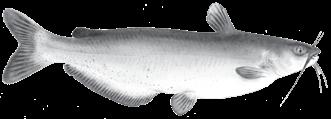
PROCTOR: Water stained; 86-89 degrees; 12.62’ low. Crappie are fair on minnows. Catfish are good on cheese bait.
RAVEN: Water clear; 87 degrees; 2.00’ low. Largemouth bass are slow to fair on top-waters early. Crappie are fair on minnows.
RAY HUBBARD: Water lightly stained; 86-89 degrees; 3.10’ low. White bass are good drifting tail spinners. Crappie are fair on jigs and minnows. Catfish are fair on prepared baits.
RAY ROBERTS: Water clear; 85-89 degrees; 1.46’ low. Largemouth bass are fair on top-waters early, and Carolina rigs late. White bass and crappie are slow.
RICHLAND CHAMBERS: Water clear; 93 degrees; 2.06’ low. Hybrid striped bass are good on live gizzard shad. Catfish are fair on shad and punch bait.
SAM RAYBURN: Water lightly stained; 88 degrees; 4.20’ low. Largemouth bass are fair to good on top-waters, crankbaits and Carolina rigs. Crappie are good on minnows and jigs. Catfish are good on prepared baits.
SOMERVILLE: Water clear; 90-92 degrees; 3.71’ low. Largemouth bass are slow. Crappie are fair on minnows. White bass are slow. Catfish are fair on minnows and worms.
SPENCE: Water stained; 86 degrees; 46.97’ low. Largemouth bass are slow. Catfish are slow.
STILLHOUSE HOLLOW: Water lightly stained; 78-87 degrees; 17.60’ low. Largemouth bass are fair early on minnows. White bass are fair
n Guide reports Page 11
n Saltwater reports Page 21
on slabs.
TAWAKONI: Water lightly stained; 90 degrees; 1.10’ low. Largemouth bass are good early on white frogs, crankbaits and Carolina rigs. White bass and striped bass are good on slabs. Catfish are good on prepared baits.
TEXOMA: Water stained; 86-90 degrees; 0.10’ high. Largemouth and smallmouth bass are slow. Striped bass are good on top-waters early. Crappie are slow. Catfish are good on cut shad.
TOLEDO BEND: Water clear; 90-92 degrees; 3.16’ low. Largemouth bass are fair on Texas-rigged worms. Crappie are slow.
TRAVIS: Water lightly stained; 83-85 degrees; 48.75’ low. Largemouth bass are fair on top-waters and creature baits.
TWIN BUTTES: Water stained; 87 degrees; 29.48’ low. White bass and crappie are slow. Channel catfish are fair on prepared baits.
TYLER: Water stained; 85 degrees; 1.86’ low. Largemouth bass are slow. Crappie are good on minnows. Catfish are good on nightcrawlers and stink bait.
WACO: Water stained; 85 degrees; 10.45’ low. Largemouth bass are slow. Crappie are good on minnows and jigs.
WALTER E LONG: Water stained; 87 degrees; 1.00’ high. Largemouth bass are good early on frogs, worms and flukes. Crappie are fair to good on grubs.
WHITNEY: Water lightly stained; 87 degrees; 7.48’ low. Striped bass are good on live bait, swimbaits and flutter spoons.
WORTH: Water stained; 87 degrees; 3.05’ low. Largemouth bass are fair on crankbaits. White bass are good on slabs with teaser flies. Crappie are fair on jigs with white color combinations. Catfish are good on punch bait.
WRIGHT PATMAN: Water stained; 90 degrees; 0.40’ high. Largemouth bass are slow. Crappie are good on minnows and jigs. Catfish are good on cut bait.
—TPWD
Continued from page 1
with the warmer, more oxygenated water above it, due to the significant temperature and density differences between the two layers.”
Nisbet said when rain events occur after it has been hot and dry during the late summer, the water on the surface becomes denser as it cools down, causing it to sink and mixing to occur.
“If the surface water gets cold enough it sinks below the thermocline, and the lake will no longer be layered or stratified, and all the water will begin to mix,” he said. Nisbet said when the mixing occurs, the oxygen becomes more spread out throughout the water column, putting fish under stress, often making them harder to catch. Anglers have certainly noticed the trend, as the fishing has become noticeably slow on both Calaveras and Braunig for about a week following the rains.
Prior to the rain events, redfish had been hanging out in depths as shallow as 4 feet or less. Almost immediately after the rains passed through, the shallow water bite seemed to completely shut down.
Steve Kotara went fishing on Braunig just a few days after the rains took place and had

trouble even getting a bite. He fished several shallow areas that, according to him, had been holding quite a few fish, and he could barely muster up a nibble.
Fishing guide T.J. Whitworth also confirmed the action came to a screeching halt for several days after the arrival of the rain showers.
“I fished on both Calaveras and Braunig Lakes, and it was like the fish just had lockjaw,” he said. “Then they slowly began to snap out of it.”
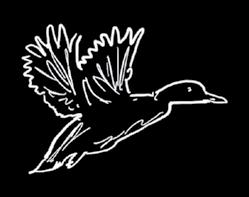
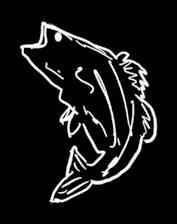


Whitworth said the redfish action has been steadily picking back up, as he had been catching a lot of redfish using live bait prior to the mixing.
“They are still hitting live bait, but it seems that pattern is starting to change,” he said.
Danny Uribe said when he went fishing on Braunig just a few days after the rains passed, there wasn’t much of anything going on at all.
“All of the areas that I had been catching fish in, were seemingly void of life,” Uribe said. “Then like a switch, a few days later, the bite turned back on, as if nothing had even happened.”

Downsize for Toledo Bend bass: Chance Burton of etxbackwateroutfitters.com reports that the bass fishing has been fair for those fishermen willing to downsize their baits. He has his clients starting their day fishing deep drop-offs in the river channel swings in 15-25 feet of water where they are using a vertical presentation, including drop-shot rigs, with smaller baits. Once the sun gets up, he finds fish that are suspended in open water at around 20 feet deep in water up to 50 feet deep. “You really need forward-facing electronics rigged with something like a jerkbait to target those open water fish. Without that, I’d suggest going up shallow to find thick grass and punch it.”
Keeping up with Richland Chambers catfish: Royce Simmons of Gone Fishin’ Guide Service reports that the lake is producing excellent quantities of eater-sized blue catfish. He has his clients fishing on or near the bottom right off creek channels in 25-28 feet of water to begin the mornings. They are using treble hooks loaded with punch bait and tight-lining their rods in areas among standing timber. “The morning bite starts on bottom, but as the sun comes up, we’ll move up about five or six revolutions on the reel. I know it’s counter-intuitive, but that’s what the fish are doing.”
Two ways to target LBJ crappie: Jess Rotherham of texascrappiefishingservice.com reports good numbers of fish being caught on both submerged timber and brush piles. He said a thermocline has set up at about 25 feet, so he has clients fishing about 15-22 feet deep in timber that is in 40 feet of water. For brush piles, he said a lot of shallower ones come up to about 16 feet deep, so he will target those with 1/32-ounce jigs on a horizontal presentation. “We’ll put a No. 2 split shot about 18 inches up from the jig and cast across the pile, letting the jig sink down for about three or four seconds and just watch the retrieve for a strike.”
Continued from page 8
included species like flounder, speckled trout, redfish, catfish, sheepshead and other species, as well as crabs in Spring Bayou. The TPWD coastal fisheries staff responded by checking and monitoring the water quality of the site where the dead fish were found.
“The dissolved oxygen levels were in between 2.5 and 6 milligrams per liter,” Iseton said. “Six milligrams per liter is relatively normal for this time of year, but



once dissolved oxygen levels drop below 3-4 milligrams per liter, the fish begin to become stressed out.” Iseton said dissolved oxygen levels are typically at their lowest during the nighttime hours because without sunlight, there is no primary productivity taking place to put more oxygen into the water. Wind speeds tend to be lower at night, too, so there is less mixing taking place to allow atmospheric oxygen to get into the water.
“This is what we refer to as a diurnal flux of oxygen,” Iseton said. “Dissolved oxygen levels reach their peak during the day and fall to their lowest values overnight. Looking at the prevailing tides for the Spring Bayou area, we noticed that the lowest water levels coincided during the time of night in which the lowest levels of dissolved oxygen likely occurred.” Iseton said she and her colleagues believe what caused the
mortality was the combination of low water levels occurring at the same time the dissolved oxygen levels were at their lowest point.

“There are shallow pockets of Spring Bayou that could leave fish trapped with nowhere to go when the tide reaches its lowest point,” Iseton said. “With low dissolved oxygen levels present, it was really a perfect storm of variables that all took place at once to cause this incident. We are confident this was
strictly a minor, isolated fish kill.” If anyone observes a fish kill or any other event that seems detrimental to the ecosystem, TPWD encourages them to immediately report their findings to the TPWD Kills and Spills Team 24 Hour Communications Center. The number for that 24-hour hotline is (512)-389-4848.
OBSCENITIES LEAD TO DOUBLE BWI/DWI

Anderson and Henderson County game wardens cited a man for boating while intoxicated on Cedar Creek Lake. Consent was given for a specimen of the violator’s blood. After the arrest, wardens were assisting with returning the boat back to shore since the other occupant was not familiar with operating a boat. Once on shore, a vehicle entered the parking lot at a high rate of speed and quickly parked in a handicapped parking spot. Once parked, the vehicle’s driver yelled an obscene greeting at a warden, possibly not fully understanding who he was in the darkness. The warden turned on his flashlight and his uniform became recognizable. Sitting in the passenger seat, the driver’s son commented on his mother’s choice of greetings. Sobriety tests were conducted and the driver, who was now belligerent, was also found to be intoxicated. Malakoff Police deputies arrived and carried the warden and the intoxicated driver to UT Health-Athens, where she consented to giving a specimen of blood. At this time, it was learned that the woman was also a diabetic with low blood sugar. Her blood sugar level was treated, she received medical clearance and was placed in jail for driving while intoxicated.
The Coast Guard received a report from the Matagorda County Sheriff’s office of a vessel taking on water with five people aboard, 20 miles offshore. An air crew, helicopter crew and response boat responded. The air crew located the vessel and the helicopter crew deployed a rescue swimmer to assess the boaters’ situation. Once on scene, the response boat and rescue swimmer secured the boaters and safely brought them to Station Freeport. There were no reported injuries.
TOUGH DAY FOR FATHER AND SON
A Belton faither and son were fishing when they observed the heads of three people in the water on Stillhouse Hollow Reservoir over the Fourth of July weekend. They were able to rescue a woman and a man, buy saw the third person go under the water and not resurface. The two were unable to reach the third person. The son said there was a language barrier, because the woman spoke an unfamiliar dialect of Spanish, but they were able to ascertain it was the woman’s fiancé who drowned. The rescuer also was an EMT and said the woman’s lips
were blue and the man appeared to be in shock and had aspirated water. It was learned by game wardens that the group had jumped in the water to go swimming, and the wind blew their boat out of swimming distance.

OFFSHORE FISHING VESSEL RESCUES
THREE FROM CAPSIZED BOAT
The Coast Guard and good Samaritans rescued three adults after their vessel capsized off the coast of Freeport. A call from the captain of the fishing vessel Ocean One reported a pleasure craft had capsized 10 miles off the coast of Freeport. All three boaters had been
in the water for two hours and were wearing life jackets. The crew of the Ocean One pulled all three boaters from the water. A Coast Guard response boat arrived and took the three men to the Freeport Municipal Park Boat Ramp. There were no reported injuries.
DEER KILLED WITH BLOWGUN DART

On Aug. 12, Texas game wardens were contacted regarding a dead white-tailed deer in Bandera. During the investigation, wardens determined the buck had been fatally wounded by a 6-inch razor tip blowgun dart during the evening hours

BY:
of Aug. 11. It appeared the dart had penetrated the buck’s chest, piercing the right lung, resulting in its death. Anyone with information is asked to contact Operation Game Thief.
BABY ALLIGATOR KEPT AS PET
The Nacogdoches Police Department alerted a Texas game warden of a baby alligator kept at a local residence in a 40-gallon aquarium. While the police attended to a separate matter in the home, the alligator disappeared from its tank. The warden arrived, spoke to the homeowner and suggested they assist with finding the alligator. They uncovered the hatchling a short time later in a blue tub hidden in the backyard. The owner confessed to finding the alligator at a local river, picking it up and taking him home as a pet. Based on its size, the warden determined it hatched just a week or two before and had only been in the possession of humans for a few days. A citation was issued and the alligator was relocated to where it was found.
REPORT ILLEGAL HUNTING AND FISHING ACTIVITY FOR A REWARD OF UP TO $1,000. CALL OPERATION GAME THIEF AT (800) 792-4263



APACHE RIFLE WORKS COMFORT, TX
BUCKS & DOES SAN ANTONIO, TX
CARTERS COUNTRY SPRING, TX HOUSTON, TX PASADENA, TX
FIELD AND STREAM SAN ANGELO, TX
GLICK TWINS PHARR, TX
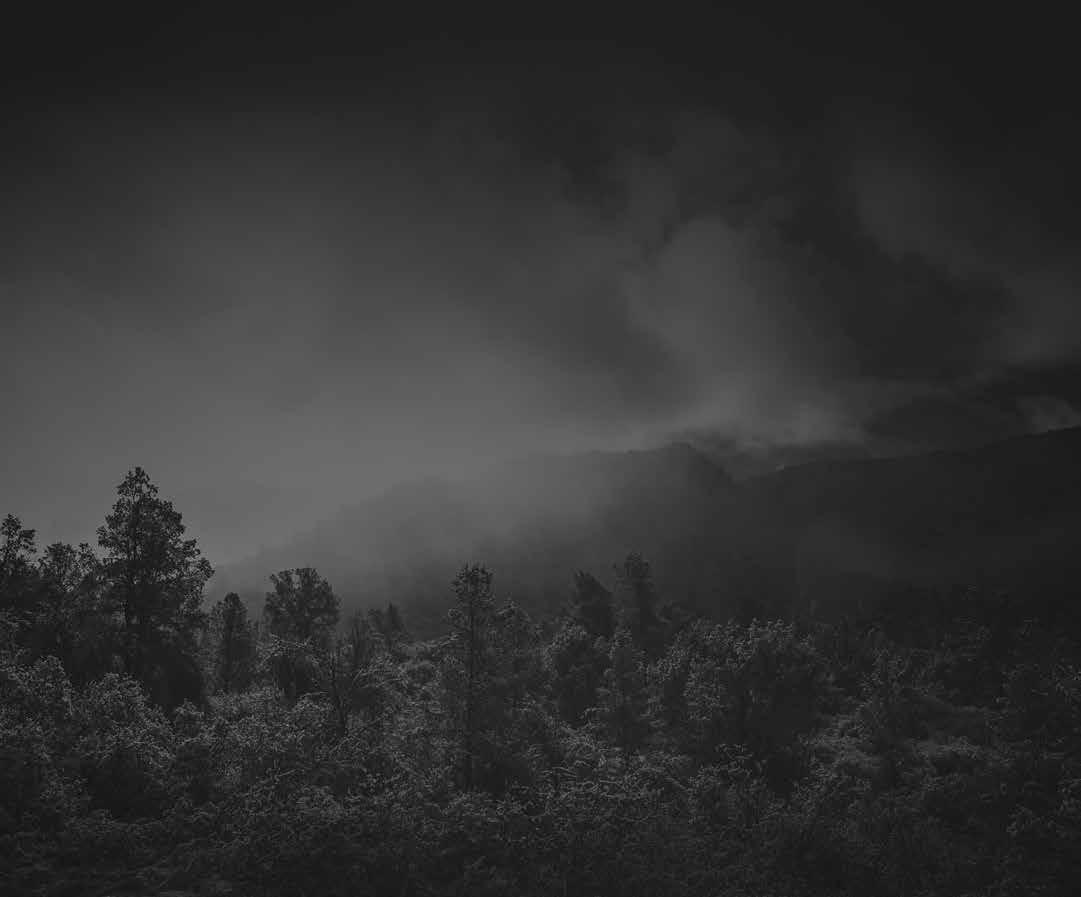
NEW FOR 2023
The Wilderness Series® Ridge is designed for the serious hunter. Those who brave the elements and need an accurate rifle that can keep up, without the extravagant price tag. Now, we’ve added a carbon fiber barrel. We can tell you the weight savings will gain you a few extra miles on foot. Or that the increased accuracy will add to your confidence. But, there’s also nothing wrong with simply one-upping your buddies.

HOFFPAUIR FARM & RANCH LAMPASAS, TX
LOS CAZADORES STONEWALL, TX PEARSALL, TX
MCBRIDES AUSTIN, TX
NAGELS GUN SHOP SAN ANTONIO, TX
NATIVE OUTDOORS HEATH, TX
PORTERS FLINT, TX
PRACO PAWN WACO, TX
SHARP SHOOTERS LUBBOCK, TX
SUPERIOR PAWN LONGVIEW, TX
TEXAS GUN EXPERIENCE GRAPEVINE, TX
THE OUTDOORSMAN SAN ANGELO, TX
VICTIORIA ALL SPORTS VICTORIA, TX
WILKERSONS GUNS BOERNE, TX

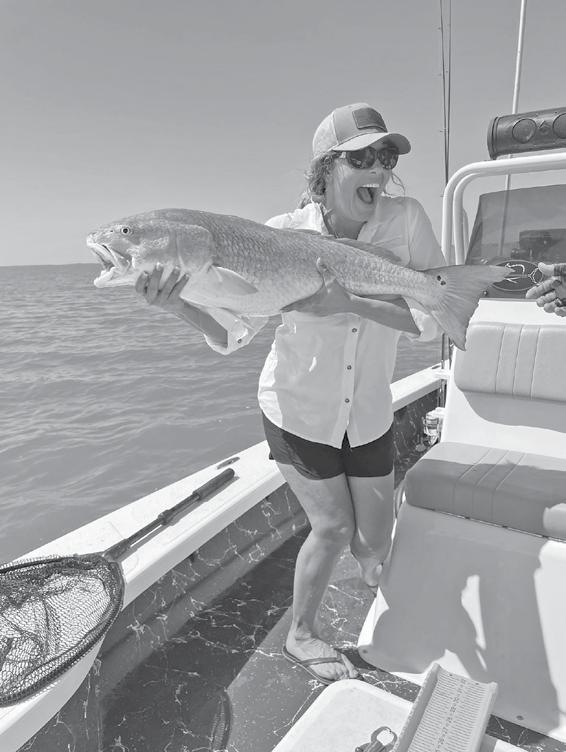

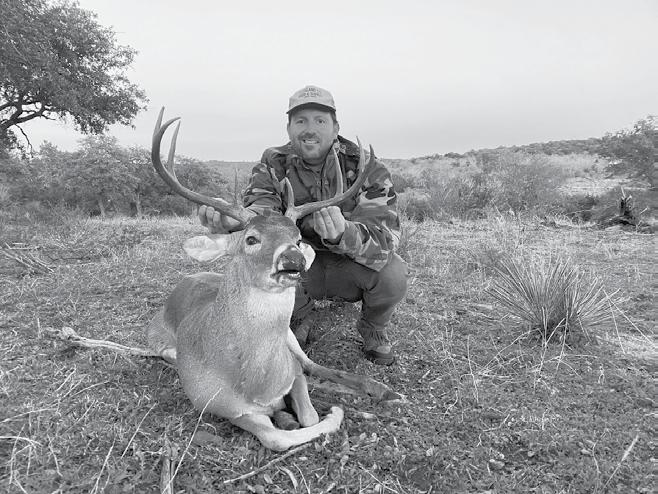

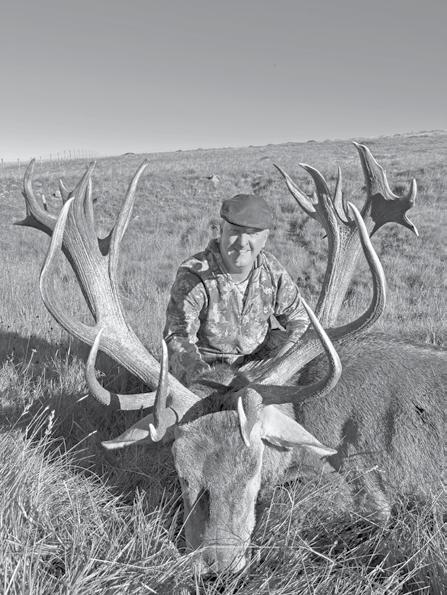
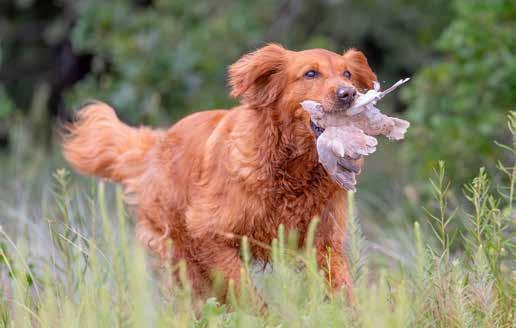







Continued from page 4
testing process works, and the emergency rules weren’t necessary.

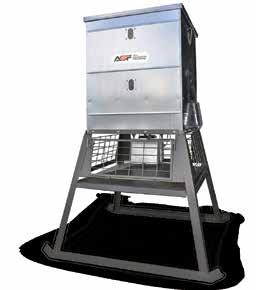

Others spoke of their approval and the need for the changes.

“This is a monumental step forward,” said Donnie Draeger, wildlife manager at a ranch in Maverick County. “Antemortem testing is just a tool for herd surveillance.”

John Letz, Texas Wildlife Association’s president, said the emergency rules were required.
“There have been a rash of cases at facilities,” he said.

A number of people pointed out the work being done to breed white-tailed deer with proven genetic resistance to the disease.
Dr. Mickey Hellickson, a wildlife biologist and former manager of the King Ranch, spoke and provided a letter to the commission, saying:
“Thanks to cutting edge genetic research by Dr. Chris Seabury at Texas A&M University–College Station, deer breeders all across Texas are now selectively breeding their captive deer herds to genetically reduce susceptibility to CWD. These efforts will no doubt lead to captive herds that are not only much less susceptible to CWD

than native whitetail herds in Texas, but I predict that in the not-too-distant future, breeder deer will once again be transported all over Texas to be purposely released onto low fenced properties in order to combat against CWD.”
One deer breeder has taken the fight to the courts. Robert Williams, of RW Trophy Ranch in Kaufman County, after several orders to destroy all of his deer, filed suit in Kaufman County, recently obtaining an injunction barring the state from killing 500 deer on his property until after a jury trial set for February 2024.
“One of our primary concerns is that they can come in and kill the deer without giving due process,” Williams’ attorney, Jennifer Riggs, said in a recent article about the suit. “There’s no hearing to test whether the deer are really a threat to any other species. They don’t have to prove the basis for why they want to kill the deer.”
Texas Agriculture Commissioner Sid Miller told the commission the decisions made shouldn’t be an attack on either ranchers or breeders.
“We want to pick winners and winners, not winners and losers,” he said.


Continued from page 1
“In 2022, Texas had 1,700 guides,” she said. “How do you compensate for that many fish being taken every day?”


The anglers advocated for a scoping study to gauge the feelings of anglers, after which the commission could consider permanent changes.
Dr. Greg Stunz, the Senior Executive Director at the Harte Research Institute, agreed with the scoping process.

“The resource is fragile,” he said. “We’re recovering well but we’re not out of the woods.” While no decisions were made at the public meeting, several commissioners indicated a desire to move forward with the scoping process.
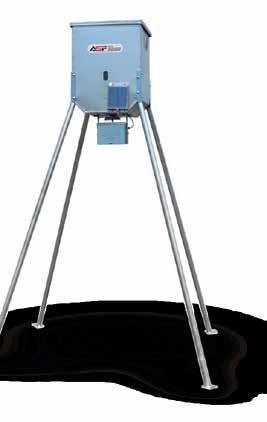

Continued from page 1
in June and runs through July, as TPWD officials will fly fixed-wing aircraft along fixed transects — north-south lines that are equally spaced within a herd unit — for an estimated 140 hours in the Panhandle region and 120 hours in the Trans-Pecos. During each flight, officials will look out about 220 yards in each direction of the transect in search of bucks, does and fawns.
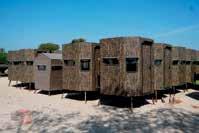
“Effectively, we put our eyes on about half of a herd unit,” said Shawn Gray, TPWD mule deer and pronghorn program leader.



Herd units are delineated by pronghorn habitat, perceived barriers to movement, permit issuance and demand, among other factors.
Gray said neither region saw any kind of significant swing, as some units improved while others declined. The Panhandle saw mostly stable numbers with a low fawn crop, and the Trans-Pecos saw numbers tick upward with a slightly better crop.


“I would say it was what we were expecting,” he said. “The numbers in the Trans-Pecos were actually a little surprising. We had a really good spring down there, which helped. The Panhandle had a later spring rain. We just didn’t really get the pulse of the fawns we were hoping to get up there, but adult numbers were about the same.”
However, stability is a great place to be when surveying pronghorn, according to Gray. Despite a slew of efforts to boost pronghorn populations — habitat improvements, brush control, fence modifications, translocations, predator management, etc. — drought is hard to overcome.
Fortunately, though, the state’s efforts are seemingly paying off in the long-term.
“The Panhandle had been experiencing a downward trend, but I think we’ve kind of stabilized, and hopefully we’re going to start bending that curve back upwards,” Gray said. “The Trans-Pecos had been on the decline, too, but I think we kicked up a little bit more than the Panhandle in terms of growth this past year.”
The pronghorn season runs Sept. 30-Oct. 15.



A special promotion from Leica Sport Optics fills the need for a top-end rangefinder at reduced prices, just in time for the fall hunting season.
Leica Sport Optics, the world-renowned pioneer in premium sports optics, is thrilled to unveil an exclusive limited-time promotion on its exceptional CRF Rangemaster models. Discerning customers seeking the ultimate preci sion and performance will have the opportunity to secure remarkable discounts on these cutting-edge rangefinders, available exclusively through participating Leica Sport Optics dealers.
Through September 30, both enthusiasts and profession als have the opportunity to explore the exceptional features of Leica’s CRF Rangemaster models and save significantly.

Leica Rangemaster models redefine precision, power, and portability in rangefinding technology. These com pact marvels excel in even the most challenging terrains, from mountains to forests, ensuring accurate measure ments at all distances. Their sleek and ergonomic design, coupled with intuitive controls, guarantees ease of use and repeatable, highly precise measurements that set new benchmarks in the industry.
Rangemaster CRF 2400-R MSRP $599, now $549 (save $50)
Rangemaster CRF 2800.COM MSRP $799, now $699 (save $100)
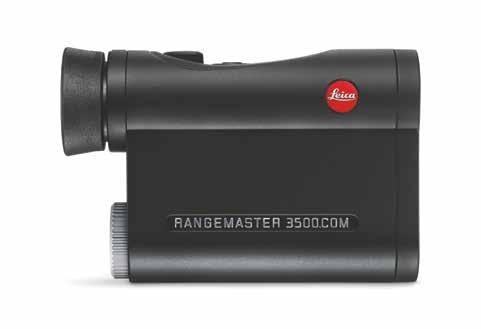

Rangemaster CRF 3500.COM MSRP $1,299, now $1,099 (save $200)

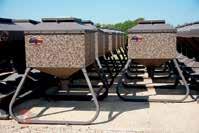
For .COM models, seamless connectivity is facilitated through Bluetooth, enabling effortless storage, transmission, and management of all ballistics data via the Leica Ballistics App. With 7x magnification and high-quality optics, comfortable observation is assured, while their rugged and robust build ensures unwavering performance in any weather conditions.
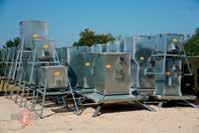
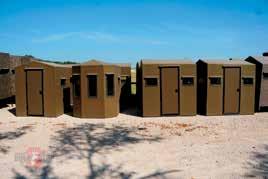

Leica Rangemaster models aren’t just rangefinders — they’re indispensable hunting companions that accompany you wherever your passion takes you. Whether scaling steep inclines or traversing challenging landscapes, these rangefinders offer unparalleled accuracy and reliability, making them an essential tool for hunting enthusiasts and professionals.
Don’t miss out on this extraordinary opportunity to elevate your rangefinding capabilities with Leica’s CRF Rangemaster models. Take advantage of these limited time offers by visiting a participating Leica Sport Optics dealer before Sept. 30.
For more information about the products and to explore the range of Leica Sport Optics offerings, visit: https://leica-camera.com/ sport-optics/hunting/rangefinder/leica-rangemaster
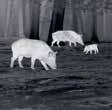

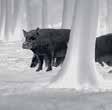
The Leica Calonox Trinity thermal package combines Leica’s unmatched history in imaging and riflescope design with an innovative clip-on thermal addition to give hunters the same outstanding image quality when hunting day or night and in any weather conditions. The Calonox Sight can easily be taken off and used in “hand-held” mode for thermal detection past 2000 yards. Maximum precision and shot repeatability thanks to a one component construction!



Key Features:
• Four field-tested color modes
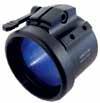

• Astonishingly large field of view
• Leica Calonox app integration
Color Modes:
• Leica Image Optimization (LIO)
• Repeatable point-of-impact
Solution on Page 22
CBC Global Ammunition announced the acquisition of lead-free bullet technology company SinterFire.
Yamaha Motor Corporation, U.S.A. purchased Fort George Island Marina in Duval County, Florida, with the intention of converting the existing facility into a testing center for Yamaha Marine products.
Olin Corporation agreed to acquire the assets of White Flyer Targets, LLC.
X-Vision Optics is searching for a national sales manager at its Red Wing, Minnesota, headquarters.

Buck Knives promoted Justin Baar to digital marketing manager and Katie Swanson to marketing communications manager.
SIONYX acquired thermal imaging system provider American Imaging Engineering (Amigen).
Legacy Sports International, a distributor/ importer in the shooting sports industry, is seeking a chief operating officer at its Reno, Nevada headquarters.
Fiocchi hired Ben Peters as director of sales.
Pope and Young hired Justin Spring as its new executive director.
SIG SAUER plans to expand facilities from 1 million to 1.6 millioin square feet and add 600-1,000 new employees over the next 1824 months.
ACROSS
1) Border lake
5) Meridian’s county
8) The poodle that hunts 10) Odessa’s county
12) Tanzania’s capital 16) The early arriving teal 18) One of the cats 19) Hunting TV host
20) Sinker type 22) Shotshell brand 23) Snake boot brand
Take on the dove hunt 27) Rangefinder brand 29) Trout species 31) Dallas County’s seat
32) Good catfish cut bait
33) A shooting sport 35) Former name of Walter E. Long Reservoir 37) The female red stag 40) Safari destination 41) DFW-area lake (two words) 42) The baby swan
Puzzle by Craig Nyhus, Lone Star Outdoor News

DOWN
2) The dove hunter’s month
3) One of Leopold’s five tools
4) The tom’s chest hair
6) One of the quail
7) Company that makes the spook
9) Potter County’s seat
11) Ammo brand
13) The biggest gar
14) A group of badgers
15) Thermal imaging brand
17) Popular fly type
21) A dove food
24) One of the mergansers
25) Central Texas lake
26) Waxahachie’s county
28) Henderson County’s seat
30) African game species
34) Texas mountain range
36) A Great Lake
38) Natural lake in Texas
39) Rifle brand
*email LSON your favorite recipe to editor@lonestaroutdoornews.com.
1 1/2 pounds striped bass fillets, cut into
serving-size pieces
1/2 cup flour
1/2 tsp. salt
1/4 tsp. white pepper
2 tbsps. vegetable oil
3 tbsps. butter
1/4 tsp. Tabasco sauce
2 tbsps. green onion, minced
1/2 tsp. garlic, minced
1 tsp. fresh lemon juice
3 tbsps. fresh parsley, chopped
In a shallow dish, combine flour, salt and white pepper. Dredge fish in the mixture. Heat oil in a skillet. Add 2 tablespoons of butter and melt. Sauté fish until golden brown, about 5 minutes. Turn and repeat, cooking until done. Add the remaining butter to the skillet. Add Tabasco, green onion, garlic and lemon juice and sauté lightly. When it begins to brown, remove from the heat and pour over fish. Sprinkle with parsley.
—North Carolina Sea Grant
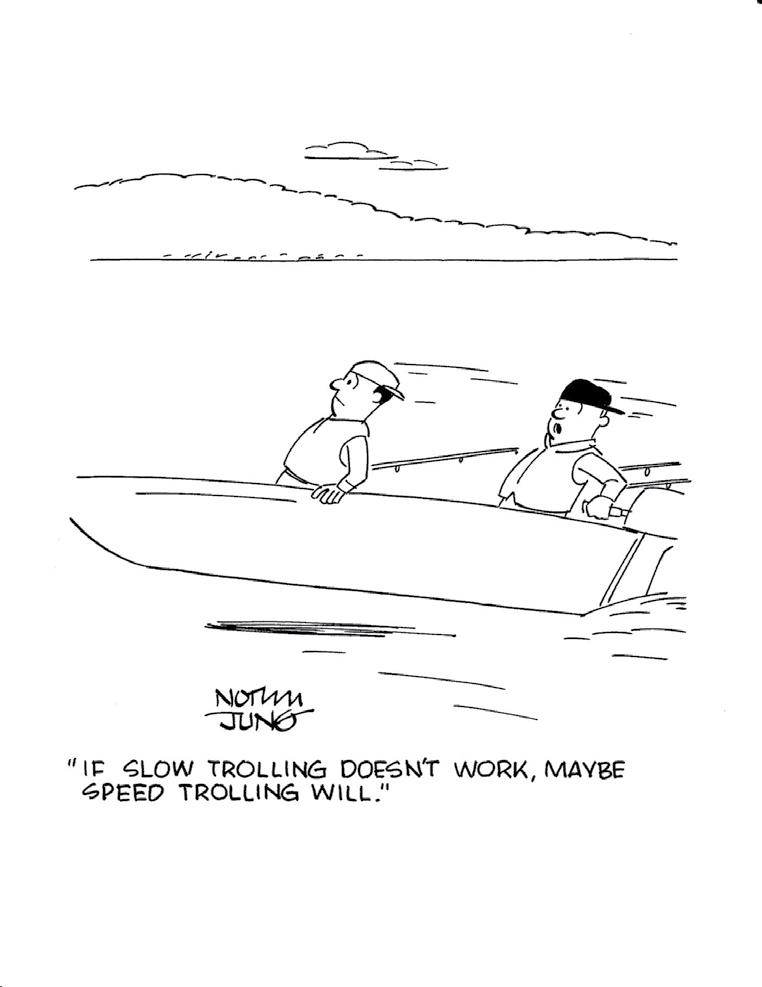
16 dove breasts, boned
1 1/2 cups spicy Italian sausage
Creole seasoning
1 cup okra
4 cups fresh tomatoes, chopped
1 onion, chopped
2 celery stalks, chopped
1/2 cup green bell pepper, chopped
Chicken broth
2 cups raw rice
2 cups raw shrimp
Salt and pepper
In a heavy skillet, sprinkle sausage with creole seasoning. Fry until cooked. Remove and drain sausage. Place in Dutch oven. In skillet, sprinkle dove breasts with creole seasoning. Brown all sides in grease. Place browned breasts in Dutch oven. In skillet, fry onion, celery and bell pepper in sausage grease until tender. Drain and place in Dutch oven. Add tomatoes to Dutch oven then add enough chicken broth to cover everything. Bring to a boil. Let simmer for 1 hour or until the dove is cooked through. Season to taste. Add rice and shrimp and simmer until rice is cooked.
—Georgia DNR
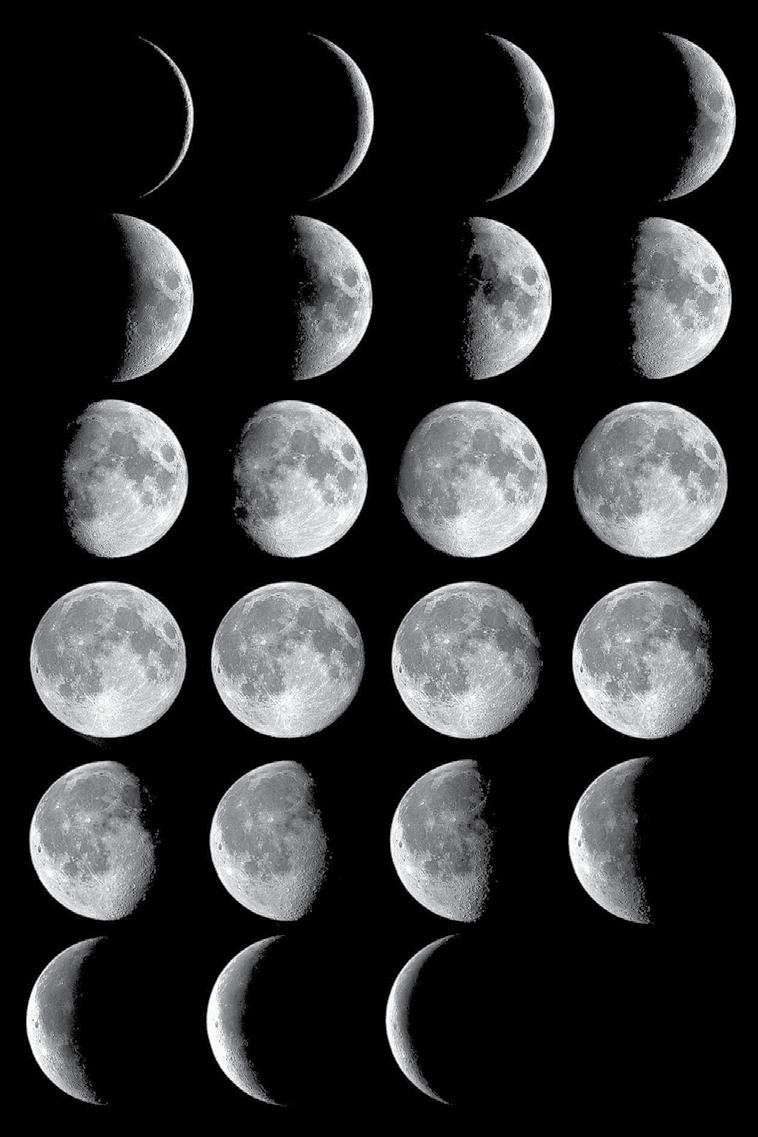







Beau Leaman, of Santa Clarita, was on his first fishing trip when he caught a potential world-record-breaking opah.
Leaman was on an overnight tuna trip on the headboat Horizon out of San Diego. Although this was Leaman’s first time on the ocean, he had experience trout fishing in lakes and streams.
Back at H&M Landing, the Opah weighed 188.6 pounds. The previous world record, set by Joe Ludlow in 2014 at San Quintin, Mexico, was 180 pounds, 12 ounces.
—Staff report
The 2023 August pheasant population survey had the highest statewide counts since 2015, with the biggest increases coming from southwest, northwest and northeast regions. The statewide average was nearly 23 birds per route; a 15-percent increase over 2022.
“The population in the northeast is the highest that region has seen in 24 years,” said Todd Bogenschutz, upland wildlife research biologist with the Iowa Department of Natural Resources.
Based on roadside counts, if hunters turn out like they have over the past few years, Bogenschutz said we can expect to see a harvest somewhere around 400,000 roosters.
—IDNR


Hatchery-raised trout are stocked in Idaho’s lakes, reservoirs, ponds and streams, especially where natural populations or habitat can’t meet fishing demand. Idaho’s trout stocking program includes 10 hatcheries and raises more than 17 million fish annually, with more about 1.5 million being “catchable” rainbow trout.
A combination of studies on what size fish is best to stock, and the surprising results, earned Idaho Fish and Game biologists recognition from the American Fisheries Society, which gave them its 2023 Outstanding Projects Award for fisheries research.
Each of Idaho’s trout hatcheries is raising fish at full capacity, so the space required for growing larger trout would mean fewer fish available to be stocked.
Common sense would say fewer trout stocked would mean fewer caught by anglers, but fisheries managers had a hunch that might not be true. One way to find out was apply fisheries research techniques and cost/benefit analysis to see if stocking fewer — but larger — trout would provide better fishing.
The study involved multiple hatcheries and dozens of waters across the state, with most of the data coming from tagged trout that anglers reported catching.
Biologists compared angler catch rates of two sizes of rainbow trout: standard size (10-

inch) commonly known as “catchables” and “magnum” (12-inch) trout. These fish were stocked into numerous and different-sized waters. Feed costs between the two were also compared.
Despite “magnum” trout costing 31 percent more in feed than smaller trout, anglers caught 100 percent more of the larger trout than the smaller ones. The larger trout also proved to be more cost effective when factoring in catch rates.
—IDFGA 21-pound, 48-inch-long mahi-mahi — also known as a dolphinfish or dorado — was caught 42 miles off the Washington coast by angler Wade La Fontaine on Aug. 25.
Upon landing at the dock in Westport, the fish was inspected by a WDFW Fish Program biologist and then weighed on a certified scale at Ocean Gold Seafoods.
Washington’s previous state record dolphinfish was 16.27 pounds caught by Albert DaSilva out of Ilwaco in 2013.
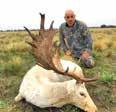



The Arizona Game and Fish Department is asking for the public’s help to find the person(s) responsible for illegally killing an adult pronghorn antelope buck.
The headless body of the animal was found along Big Chino Road, northwest of the town of Paulden, in an area closed for pronghorn hunting at that time. Investigators believe the unlawful killing of the pronghorn happened between Aug. 21-24.
At the Cortland World Youth Fly Fishing Championship, held in Mostar, Bosnia and Herzegovina, the US Youth Fly Fishing Team of six American teens took the gold medal. The team was led by Captain/Coach, Josh Miller. Competing for three hours a day for five days straight in 100-degree heat, the team ended with a 28-point lead over second place France and a 67-point lead over Slovakia.
The U.S. team also had two anglers take medals in the individual competition. Drew Bone, age 19, of Bernalillo, New Mexico, took gold and is the current World Champion, and Kage Kossler, 17, of Bend, Oregon, took silver.
Other team members included Lawson Braun, 16, of Waynesville, North Carolina, Blake Hall, 14, of Marion, Virginia, Max Logan, 17, of Boulder, Colorado, and Noah Shapiro, 19, also of Boulder. —IFFWC
SABINE LAKE: 90 degrees. Speckled trout are fair to good on croaker, shrimp, top-waters and soft plastics. Redfish are fair on shrimp under a popping cork.
BOLIVAR: 87 degrees. Redfish and black drum are fair in the surf on cut bait. Speckled trout are fair on shrimp under a popping cork.
TRINITY BAY: 89 degrees. Speckled trout are fair on shrimp. Black drum and redfish are fair in the ship channel on shrimp.
EAST GALVESTON BAY: 90 degrees.
Speckled trout are fair on live shrimp and artificial shrimp under popping corks. Redfish are fair on shrimp.
WEST GALVESTON BAY: 90 degrees.
Speckled trout and redfish are fair on croaker and shrimp under popping corks.
TEXAS CITY: 87 degrees. Speckled trout are fair on shrimp under a popping cork. Artificials and free-lined croaker. Redfish are fair on croaker and shrimp.
FREEPORT: 86 degrees. Speckled trout and redfish are fair to good on croaker and shrimp under popping corks.
EAST MATAGORDA BAY: 89 degrees. Redfish are good on croaker and artificials. Speckled trout are good in the surf or drifting the west end of the bay on live shrimp and scented plastics under a popping cork.
WEST MATAGORDA BAY: 89 degrees. Redfish are good on soft plastics and croaker. Speckled trout are good drifting shrimp.
PORT O’CONNOR: 87 degrees. Red-

fish are fair on Spanish sardines and live shrimp. Speckled trout are good free-lining croaker.
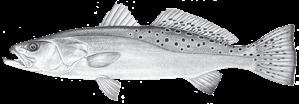
ROCKPORT: 88 degrees. Redfish are good on paddle tails, top-waters and cut bait. Speckled trout are good on artificials and shrimp. Black drum are fair on dead shrimp.
PORT ARANSAS: 89 degrees. Redfish are fair on live shrimp under a popping cork and cut mullet or live finger mullet.
CORPUS CHRISTI: 89 degrees. Speckled trout and redfish are fair in Nueces Bay on live shrimp.
BAFFIN BAY: 86-95 degrees. Speckled trout and redfish are good on top-waters and soft plastics.
PORT MANSFIELD: 88-91 degrees. Speckled trout and redfish are fair early on small soft plastics and top-waters.
SOUTH PADRE: 87 degrees. Speckled trout are good in the Intracoastal on live shrimp under a popping cork and freelining shrimp. Redfish are fair at the jetties on shrimp.
—TPWD
QUAIL HUNTING
MID-TEX LAND SERVICES LLC
DOVE HUNTINGJIM WELLS COUNTY
700+ acres with multiple water holes & milo fields
Special White-Winged Season
South Zone:
Sept. 1-3 & Sept. 8-10
And Regular Season:
Sept. 14 - Oct. 29 & Dec. 15 - Jan. 21 (361) 701-4711
RED RIVER TRACT IN COOKE COUNTY
Corps. land and rare boat ramp access. $495K, will finance. (214) 463-2217
C4
TROPHY DEER LEASE Comal County high fence, 65 acres $15,000
5 deer, no more than 2 bucks. Dennis (210) 602-6360
WHITETAIL + HOGS
Brush country whitetail bucks!
Doe, management bucks and hog hunts
All-inclusive guided hunts zacatehunts.com


(325) 446- 6716
DEER HUNTERS
Used Deer Blinds for sale
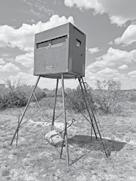
4x6 fiberglass with 10-foot towers Three available, $1850 each
Used feeders also available Text for photos
Located 1 hour north of Abilene (214) 695-2950
Guided-Self Guided-Training 700 yard RANGE PoetryShootingClub.com (214) 728-2755
for more info (361) 244-0544 OR (361) 443-9330
COLORADO ARCHERY ELK AND BEAR HUNT Sept. 16-21 on a private ranch with hunting lodge in unit #25. $6,000 for a group up to 7. Property borders White River National Forest. Over the counter licenses. (970) 243-5362

Land Clearing, Mulching, Rock Milling, Roads, Excavation
Professional and insured MidTexland.com (254) 595-1696
EXOTICS + WHITETAIL
Several species Trophy and meat hunts
Owner guided Very reasonable Let’s have fun! (325) 475-2100
SKID STEER BRUSH CUTTING / HYDRO AX
All your clearing needs, right-of-ways, senderos, creek & river bottoms, fence lines etc. South Texas Call Frank (512) 699-5381
477-9065
9,600-ACRE RANCH FOR RENT IN MEXICO
Mostly surrounded by Amistad Lake.
Incredible views, great for fishing, White-tailed deer and Sonora mule deer hunting.
Dove and Duck potential hunting, just 45 minutes across from Del Rio, TX border.
For more information,send an email to bernardo@mhgroup.com.mx
NEED ARCHERY RANGE? TexasArchery.info


FISHING
CRAPPIE. CATFISH. SANDBASS. STRIPER. Guided Hunts and Offshore Adventures. DFWOutdoors.com Call Capt. Lane Palmer at (817) 266-9811

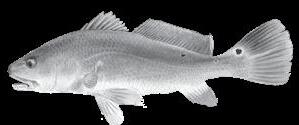
BAY FISHING 6 Hour Trip from $275 Port Isabel, TX (956) 551-1965
LUXURY CABINS
Built on your lot in Hill Country. Starting at $72000. Visit the model. Selectcabin.com. Call Dave (512) 921-7979
PART-TIME DELIVERING LONE STAR OUTDOOR NEWS Rio
SEPTEMBER 9
OPERATION GAME THIEF
San Antonio Clay Stopper Shootout
National Shooting Complex (512) 389-4628 ogttx.org
SEPTEMBER 12
DUCKS UNLIMITED
Lake Ray Hubbard Dinner Southern Junction, Royse City (214) 504-4544 ducks.org
SEPTEMBER 14
DUCKS UNLIMITED
Midland Dinner Bush Convention Center (432) 664-9559 ducks.org
SEPTEMBER 16
DUCKS UNLIMITED
Galveston Banquet Galveston Railroad Museum (832) 671-8980 ccatexas.org
SEPTEMBER 20
DALLAS SAFARI CLUB
Awards and Member Stories
El Fenix Dallas (972) 980-9800 biggame.org
SEPTEMBER 23
DALLAS SAFARI CLUB
Small Bore Shoot
Elm Fork Shooting Sports (972) 980-9800 biggame.org


FREEDOM BOATS USA
Annual Owners Tournament Port O’Connor (361) 552-4975 freedomboatsusa.com
LAREDO COC
Cola Blanca Awards Pachanga (956) 722-9895 colablanca.com
SEPTEMBER 27
DUCKS UNLIMITED
Houston Legacy Gala Lakeside Country Club (713) 471-8854 ducks.org
SEPTEMBER 28
WHITETAILS UNLIMITED Lake Fork Deer Camp Mineola Civic Center whitetailsunlimited.com
COASTAL CONSERVATION ASSOCIATION Dallas Banquet On the Levee (713) 626-4222 ccatexas.org

SEPTEMBER 29-OCTOBER 1
LLANO MUSIC FEST Hill Country Outdoor Expo (325) 423-2727 llanomusicfest.com
SEPTEMBER 29
ROCKY MOUNTAIN ELK FOUNDATION Texas Mainland Banquet Texas City Police Association Bldg. (281) 229-8715 rmef.org
OCTOBER 4
LONE STAR OUTDOOR NEWS FOUNDATION

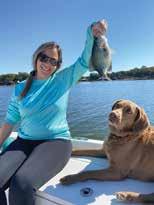



Wild Game Night (214) 361-2276 lsonews.com
OCTOBER 5
DALLAS SAFARI CLUB
DSC 100 Party King’s X Club (972) 980-9800 biggame.org
HOUSTON SAFARI CLUB
HSCF Sporting Clays Tournament

Greater Houston Sports Club (713) 623-8844 hscfdn.org
DUCKS UNLIMITED
Fort Worth Banquet River Ranch (817) 319-4600 ducks.org
WHITETAILS UNLIMITED

South Texas Deer Camp Spring Creek Place, Victoria (512) 657-9943 whitetailsunlimited.com




DUCKS UNLIMITED

Lonestar Chapter Banquet
JLK Event Center, Llano (512) 756-3655 ducks.org
Every year, DSC hosts its annual Convention that raises funds for grants in conservation, education, and advocacy. The four-day 2024 DSC Convention is open to the public and will fill over 800,000 square feet with 1,000 exhibitors featuring outfitted hunts, firearms, gear, wildlife art and much more.
Mark your calendars! DSC 2024 Convention – January 11-14


Even after you upgrade to a new HK VP9, with its best-in-class trigger pull and ergonomic, customizable grip, you’re not quite done yet. You still need a couple of important accessories. And we’re not talking about holsters, lights and optics either. Training and Practice – They are two different things and we all need more of both. Look into it … and go do the work!


A Place to Shoot San Antonio, 210-628-1888
Abilene Indoor Gun Range
Abilene, 325-698-4224
Able Ammo
Huntsville, 936-295-5786
AJC Sports
Clute, 979-265-4867
Ally Outdoors
Midland, 972-332-3700
Richardson, 972-332-3700
Alpha Armory
Houston, 888-932-7660
Alpine Shooting Range
Ft Worth, 817-478-6613
Americana Arms, LLC
Beeville, 361-362-3673
Athena Gun Club
Houston, 713-461-5900
BPS Outfitters
Sherman, 903-832-2227
BTO Range
Conroe, 936-588-3333
Buck & Doe’s Mercantile, LLC
San Antonio, 830-980-3637
C.A.C Tactical
Southlake, 888-211-8191
Caroline Colt Company LLC
Abilene, 325-232-7501
Carroll’s Gun Shop
Whaton, 979-532-3175
Carter’s Country
Houston, 713-461-1844
Houston, 281-879-1466
Pasadena, 713-475-2222
Spring, 281-443-8393
DFW Shooting Sports Bedford, 817-285-0664
Champion Firearms College Station, 979-693-9948
Collectors Firearms
Houston, 713-781-5812
Danny's, Inc.
McAllen, 956-687-4692
Defender Outdoors
Fort Worth, 817-935-8377
DFW Gun Club
Dallas, 214-630-4866
Dury's Gun Shop
San Antonio, 210-533-5431
Field & Streams Sporting Goods
San Angelo, 325-944-7094
Fun Guns
Waco, 254-755-0080
Gibson’s
Weatherford, 817-594-8711
Glick Twins
Pharr, 956-787-429
GRITR Sports
N. Richland Hills, 817-200-7470
Grabagun.com
Coppell, 972-552-7246
Guard & Defend Firearms
Silsbee, 409-201-9468
Guns Warehouse LLC
Cedar Park, 512-986-7330
Hoss Arms, LLC
New Braunfels, 830-609-8891
John Doe Investigations, LLC
Lewisville, 214-773-0129
Kirkpatrick Gun & Ammo
Laredo, 956-723-6338
Marksmen Firearms
Mansfield, 817-453-8680
McBride's Guns
Austin, 512-472-3532
Misson Ridge Range & Academy
San Antonio, 210-504-9000
Mister Guns LLC
Plano, 214-901-7429
Modern Pawn & Guns
Corpus Christi, 361-993-9390
Nagel's Gun Shop, Inc.
San Antonio, 210-342-5420
Nardis Gun Club
San Antonio, 210-369-9199
Omaha Outdoors
Rosenberg, 713-703-4648
Past & Blast Antiques & Firearms
Whitesboro, 903-564-5444
Point Blank Sporting Goods
Pharr, 956-992-8799
Primary Arms
Houston, 713-344-9600
Ranger Firearms of Texas Inc.
San Antonio, 210-822-4867